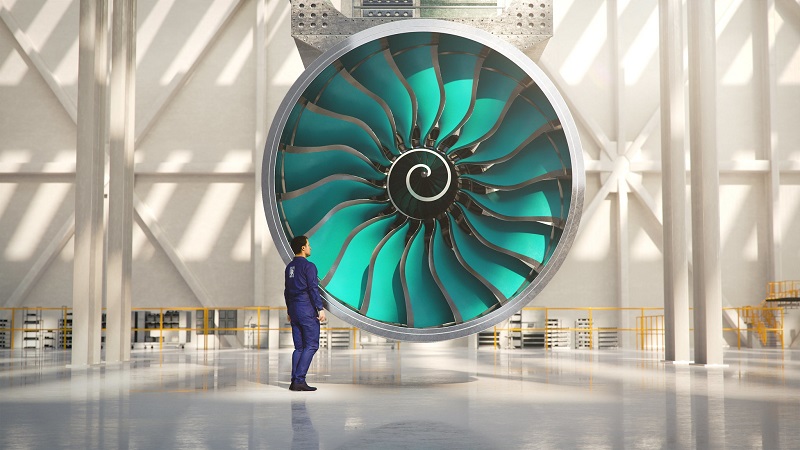Rolls-Royce has started manufacturing the world’s biggest fan blades, composite whoppers that will be part of a fuel-efficient engine with a diameter almost the size of a current narrowbody fuselage.
A set of the blades, which are being made at the company’s new Bristol-based technology hub, will have a 140-inch diameter and their manufacture marks the start of production of parts for the UltraFan demonstrator.
The UltraFan is aiming for a 25 percent fuel reduction compared to the first-generation Trent engine, partly by providing a twin-engine plane with a 700kg weight reduction courtesy of the composite materials used for the blades and fan case.
READ: Air Italy folds despite support from Qatar.
It will start ground tests in 2021 and offer a scalable design from 25,000lbs of thrust through to 100,000lbs with a geared design to maximize high-thrust, high-bypass ratio engine efficiency.
Other features include a new engine core architecture to deliver maximum fuel burn and low emissions and advanced ceramic matrix components that operate more effectively at high temperatures.
The fan blades are created by building up hundreds of layers of carbon-fiber materials pre-filled with resin.
These are subjected to heat and pressure and thin titanium leading edge added to protect against erosion, foreign objects and bird strikes,
The blades have already been tested in a development engine, including in-flight testing on the Rolls-Royce Flying test Bed.
“This is the decade of UltraFan and it’s exciting to enter the 2020s with the start of production of the demonstrator engine,’’ Rolls-Royce civil aerospace president Chris Cholerton said.
“We have got all the building blocks in place, the design, the technologies, a brand-new testbed, and now we are actually seeing the engine come together.”
The engine will be put through its paces in 2021 the world’s largest testbed, a 7,500 sq. m facility in the English town of Derby that starts testing Trent engines later this year.
The start of the UltraFan manufacturing comes as Rolls-Royce celebrates the 25th anniversary of the delivery of the first Trent engines on a Cathay Pacific Airbus A330.
The Trent family now boasts seven members with more than 4,000 engines in service and Rolls expects that number to increase to 7500 over the next 10 years.
Like all families, there have been upsets: manufacturing problems with the Trent 900 that caused an engine to explode on a Qantas A380 near Singapore in 2010 and the more recent defects with the Trent 1000s.
Nonetheless, the family has completed more than 145 million flying hours, the equivalent of 390 return journeys to the sun, and carried more than 3.5 billion people in its first 25 years.
Rolls-Royce notes it has helped grow its widebody engine market share from single digits to the point where it today powers almost half of widebody aircraft.
A Trent 700 also last year recorded a world record time on wing — 50,000 flying hours — on an Aeroflot A330.
Cholerton said the Trent was built on a relentless desire by Rolls-Royce to be pioneers by making engines increasingly efficient and sustainable.
“We’ve had challenges along the way, and still do, and we are absolutely committed to dealing with any issues to ensure that the Trent family remains an outstanding product,’’ he said.
Trent engines, which run from the 500 to the 1000 series, are now manufactured in Singapore and Germany as well as the UK.
Rolls-Royce is responding to the expected growth by expanding its global service network to cater for a surge in demand in engine maintenance services.
It has also set up a network of customer service centers in Asia, the Middle East, the Americas, Europe and China.
























